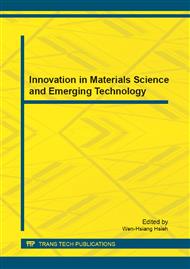p.93
p.99
p.104
p.109
p.114
p.119
p.124
p.129
p.134
Flood Mapping Using ASAR and Landsat Data in Poyang Lake
Abstract:
Poyang Lake is the largest freshwater lake in China which located in the Jiangxi province. Flood happened around the lake almost each summer. Remote sensing technology is an effective way to monitoring flood at large scale. This study employs images of Advanced Synthetic Aperture Radar (ASAR) and Landsat Enhance Thematic Mapping Plus (ETM+) to map the flooding area in Poyang Lake. Two ASAR scenes are adopted in this study: one was acquired in flooding period on 1st July 2010, and another was acquired on 9th September 2010 in dry season. Water body is extracted using threshold method, and flood inundation area is detected using the two images. Texture analysis of ASAR data and ETM+ indices are synchronously used in classification. Texture layers of ASAR data are computed, and Normalized Difference Vegetation Index (NDVI) and Modified Normalized Difference Water Index (MNDWI) are also calculated using ETM+ data acquired in the dry season. NDVI and MNDWI derived from ETM+ data are sensitive to soil moisture and vegetation cover., therefore, these two classes are more separable from dry and non-flooded objects than they are in a “ASAR only” classification. The indices derived from ETM+ are used as additional layers for water body classification. Supervised classification is implemented on both ASAR dataset and ASAR+TM data using Maximum Likelihood classifier. Results suggest the classification of ASAR and ETM+ combined data is more homogeneous because the indices reduced speckle-noise, and features can be clearly separated.
Info:
Periodical:
Pages:
114-118
Citation:
Online since:
December 2011
Authors:
Keywords:
Price:
Сopyright:
© 2012 Trans Tech Publications Ltd. All Rights Reserved
Share:
Citation:


